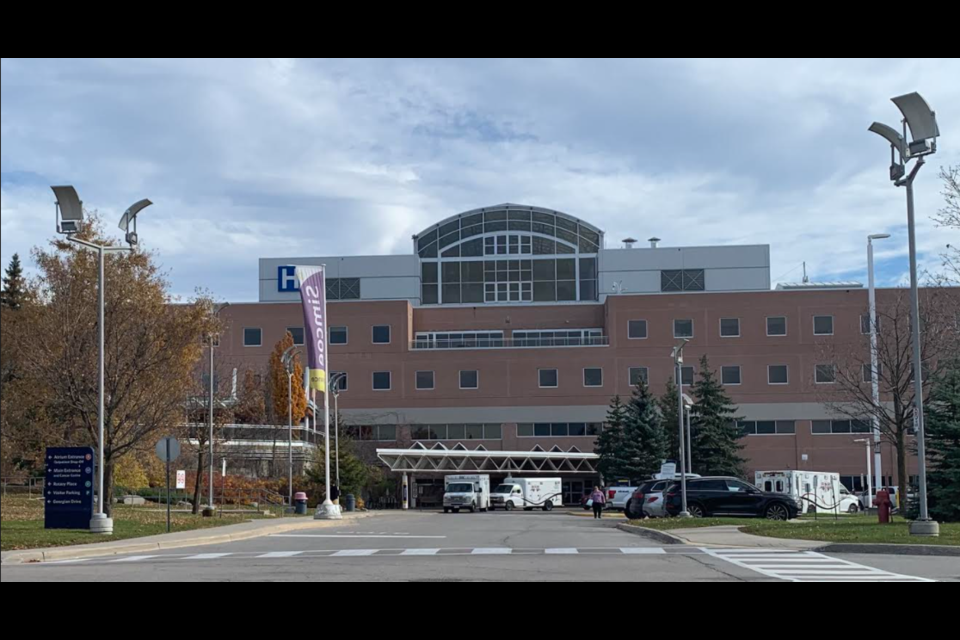Editor's note: Thursday, March 11 marks one year since the World Health Organization declared a global pandemic.
*************************
The last 12 months has brought heartache, loss, exhaustion and change — but not all change is bad.
Looking back to March and April 2020, Royal Victoria Regional Health Centre (RVH) president and chief executive officer Janice Skot recalls it being a whirlwind, with information and directives changing by the minute.
“You’d get a directive in the morning and you wouldn’t be surprised if that directive had to change. We were continually adapting to this brand new virus. It was uncharted territory and so we really had to shift direction on a dime,” she said.
“It was overwhelming and every time we’d have an emergency operations meeting and the directive would change, I was inspired by people’s ability to absorb it, figure out what the new directive was and when you’d get back together in a couple hours, amazingly it was done," Skot added.
Like the rest of the country, hospitals went into lockdown.
“We had screeners at front entrances and we still have very strict visitor policies, which I know is very hard on everyone," Skot said. "We had to cancel and postpone many scheduled surgeries and we had to send our Blue Brigade home. They really are the heartbeat of the organization and they’re still not able to come back to the health centre yet.”
In the early days of the pandemic, a lot of time was spent facing the global shortage of personal protective equipment (PPE), noted Skot, adding hospital officials worked with suppliers around the world to ensure that staff, physicians and patients were going to be protected.
The organization also introduced new processes and protocols and created new spaces to make the hospital safer. RVH also hired hundreds of health-care workers, nurses, infection control specialists and cleaners, while also taking the existing RVH team through a retraining of its strict safety measures.
“We decided early on to get equipment in to do COVID swab testing in house so we could manage that. We also had a testing clinic on site at first before we moved it over to Sperling Drive, which is still being run,” Skot said. “In December, we worked with the Simcoe Muskoka District Health Unit to open a vaccine site, which is a business we’ve never been in before, but we’ve worked so well with (medical officer of health) Dr. (Charles) Gardner and his team. We’ve been part of the clinic and assisting with mobile vaccinations.”
Another thing the organization took on in the last year that was different from its core business, she noted, is it became involved with 25 long-term care homes. Members of the hospital’s 'rapid response team' provided onsite support to 25 long-term care and retirement homes.
“We also accepted almost 100 patients from GTA hospitals who were sent up from those overcrowded hospitals… some were very ill and some became critically ill in our ICU,” Skot said.
In addition to the 70-bed field hospital in the parking lot, the organization also created additional critical care beds at IOOF.
“We opened an entire unit at the IOOF where we have many of our alternate level of care patients," she said. "It is still open today because we just could not have people in hallways receiving care. Those beds, and more beds, must stay open for our future. It's all about safety and that is where it’s going to stay.”
While only time will tell what the future will bring, Skot said there’s no doubt that the last year has changed how health care will —and should — be provided.
“Internally, our team will continue to work together to stay safe and to provide patient care,” she said, adding the pandemic has meant various organizations in the region have had to work together.
“We have worked more closely together as a system — RVH, (the health unit), the long-term care sector, the other hospitals in our region... no one could tackle this on their own," Skot added. "Everyone has worked more closely together to have a shared level of success and response in this pandemic.”
A number of other things have changed significantly, she continued, adding there are some things that should never go back to how they were before.
“We have changed our spaces, our processes and our practices (and) I think it will change forever. One of the areas I think we have to really be cognizant of is we cannot deal with overcrowding the same way,” she said.
Since the pandemic was declared, hospitals have not had patients in hallways as has unfortunately been the case in the past.
“That would be an example of bed capacity," Skot said. "This is a huge issue and we need to make sure if we are going to function safely we can’t go above 100 per cent (capacity). In fact, textbooks tell you at most 90 per cent occupancy is what you should be at. You should always have a little bit of surge capacity in order to respond to something that will come your way that you're not expecting.
"We always have to be prepared and we can’t let our guard down.”
The main thing that hasn’t changed, she said, is the hospital’s focus on safety.
“Hospitals have always been in the business of managing infectious diseases, so therefore we’ve always had that focus on safety and providing the best possible care," Skot said. "This one-year pandemic has highlighted for us the importance for us of not going over capacity to make sure patients aren't in hallways receiving care and are not crowded in rooms so we can in fact move forward.
“We have been working together — and by that I mean hospital staff, the health unit, long-term care… and post-pandemic we need to continue those working relationships so we can in fact do better for our patients.”



